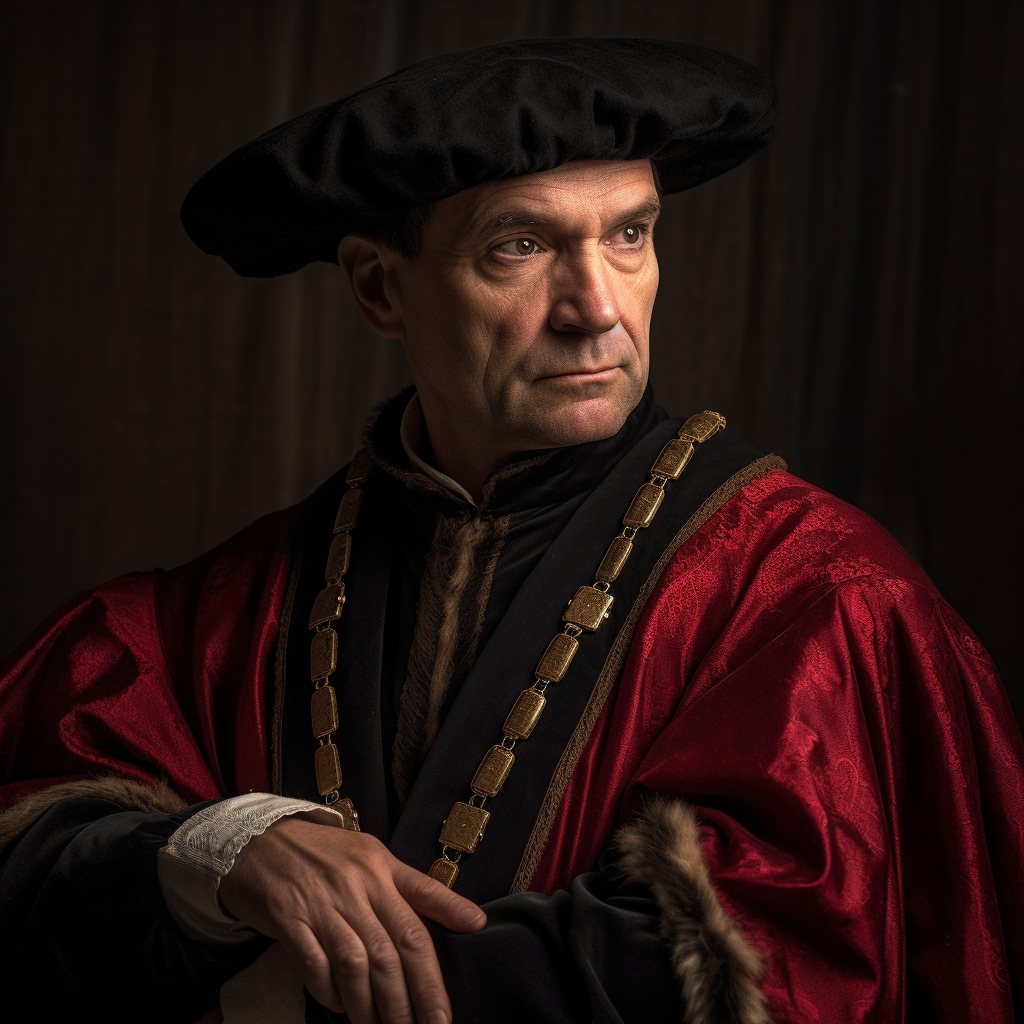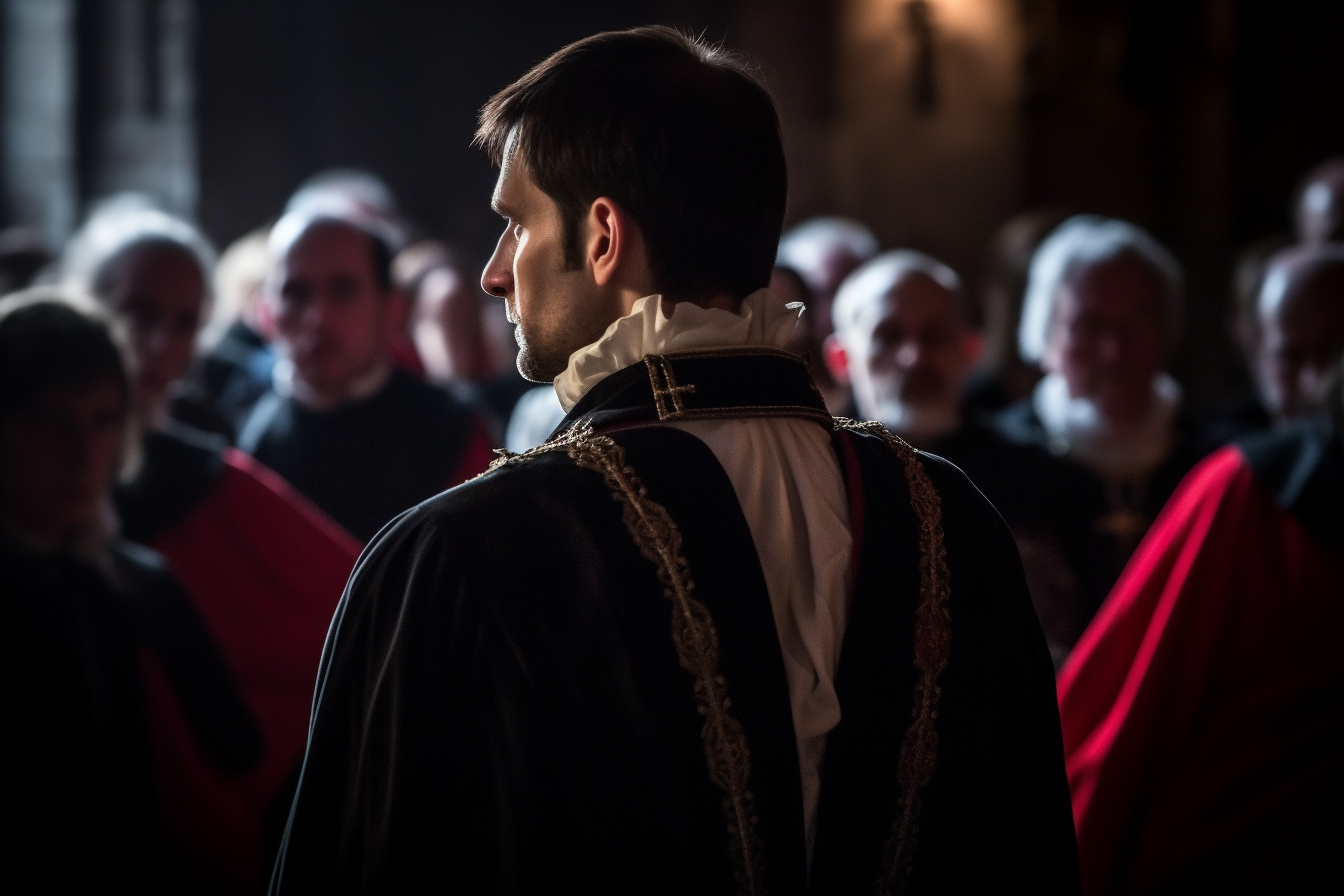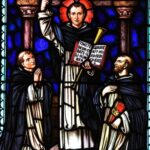
St. Thomas More
St. Thomas More
When they lived:
St. Thomas More, also known as Sir Thomas More, lived during the late 15th and early 16th centuries. He was born on February 7, 1478, and died on July 6, 1535.
Where they lived:
Thomas More lived in London, England, for the majority of his life. He was born in the city of London and spent significant time in various parts of the city throughout his career. His later years were marked by his residence in Chelsea, a district in southwest London.
Notable world events during the time of their life:
- The Age of Exploration (Late 15th to Early 16th Century): This era saw famous explorers like Christopher Columbus (1492), Vasco da Gama (1498), and Ferdinand Magellan (1519) embarking on voyages that would change the world’s understanding of geography and open up new trade routes.
- The Protestant Reformation (Early 16th Century): Martin Luther’s posting of the 95 Theses in 1517 sparked a religious movement that led to the division of Western Christianity. This period of religious upheaval deeply influenced the life and times of Thomas More.
- The Italian Renaissance (14th to 17th Century): During More’s lifetime, the Italian Renaissance was in full swing. This cultural and intellectual movement had a profound impact on Europe, fostering artistic, scientific, and philosophical advancements.
- The Invention of the Printing Press (1450): Johannes Gutenberg’s invention revolutionized communication, making books more widely accessible and facilitating the spread of knowledge.
- The Birth of Modern Science: In the early 16th century, figures like Nicolaus Copernicus (1473-1543) and Andreas Vesalius (1514-1564) laid the foundation for modern astronomy and anatomy, respectively, marking a shift from medieval thought to scientific exploration.
Patronage:
St. Thomas More is a patron saint of lawyers and statesmen, a role that reflects his own life and career. His deep commitment to the law and his unwavering conscience made him a symbol of integrity in the legal profession. More is also remembered for his literary contributions, including the famous work “Utopia,” which explored themes of an ideal society. Beyond his patronage, his legacy as a martyr for religious freedom and his willingness to stand by his convictions make him a figure of enduring interest and inspiration.
Vocation to Becoming a Lawyer
Thomas More on February 6, 1478, in London More was educated at St. Anthony’s in Threadneedle Street, one of London’s prestigious schools. He also studied at the household of John Morton, archbishop of Canterbury and chancellor of England. John More, his father, was a prosperous barrister who was afterwards made a Knight and Judge of the Kings Bench.
More’s father wanted him to become a lawyer. Realizing that he might have a vocation to the priesthood, he resided in the Carthusian monastery for about four years. He shared as much of the monks’ way of life as was practicable. Although he was attracted especially to the Franciscan order, More eventually decided that he would best serve God and his fellow men as a lay Christian. Despite this, he never discarded his habits of early rising, prayer, and fasting.
More entered Oxford in 1492, where he learned Latin and Greek and prepared for his future studies. In 1494, he left Oxford to become a lawyer, and he trained in London until 1502, when he was finally approved to begin practice. More became a lawyer and a member of the English Parliament. Because of his education and intelligence, More became a tutor for King Henry VIII when he was young.
A Rising Career
In 1505, More married his first wife, Jane Colt, to whom he had four children before her death in 1511. Their marriage was said to be happy, and More often tutored her in literature and music. After Jane’s death, More quickly remarried to Alice Harpur Middleton, a wealthy widow. The wedding took place less than a month after Jane’s passing and was poorly received by his friends.
In 1510, More rose to represent London. He earned a reputation for being honest and effective during his service to the people of London. He became a Privy Counselor in 1514. From 1517 on, Henry VIII took a liking to More and gave him higher posts. In 1529, Henry appointed More Lord Chancellor of England.
Obeying God Rather Than Man
During his term as Lord Chancellor, More prosecuted those accused of heresy and worked tirelessly to defend the Catholic faith. However, in 1530, as Henry worked to obtain a divorce from his wife, Catherine, More refused to sign a letter to the Pope requesting an annulment. This was More’s first time crossing Henry. Henry expected him to take his side, but More refused. In 1532, realizing that he could no longer work for Henry, More resigned from his post.
King Henry VIII decided to separate the Church of England from the Catholic Church in Rome. He commanded the parliament to make a document and proclaim him the head of the Church of England, and he demanded that all the bishops in England and his entire government sign the oath. Knowing that the Pope was the successor of Peter and that there could only be one Church and one Pope, More refused to sign.

“The King’s Good Servant, but God’s First”
In 1533, More refused to attend the coronation of Anne Boleyn, who was now the Queen of England. More’s absence was seen by the king as an insult to the new queen and an undermining of his authority. Henry had charges thrown against More, such as accepting bribes and conspiracy.
On April 13, 1534, More was ordered to take an oath to acknowledge Anne as the queen, Henry’s divorce from Catherine, and his superiority as head of the Church of England. More accepted Henry’s marriage to Anne, but refused his being the head of the church and the annulment of their marriage. For this, More was arrested and imprisoned in the Tower of London.
More faced trial and was convicted by a partial jury. Despite his defense, More was convicted in fifteen minutes. He was sentenced to be hanged, drawn, and quartered, the punishment for treason. As a final act of mercy, Henry commuted More’s punishment to a mere beheading.
On July 6, 1535, More ascended the scaffold, joking to his executioners that they should help him up the scaffold but that he would see himself down. He then made a final statement, proclaiming that he was “the king’s good servant, but God’s first.” Pope Leo XIII beatified More in 1886, and he was canonized by Pope Pius XI on May 19, 1935. His feast day is June 22.
5 Interesting Facts About St. Thomas More
- St. Thomas More was canonized together with his good friend, the bishop St. John Fisher. Both have their feast days on the same day.
- St. Thomas More is the patron saint of adopted children, lawyers, civil servants, politicians, and difficult marriages.
- One of St. Thomas More’s celebrated works is Utopia. This opus imagines a complex, self-contained community set on an island in which people share a common culture and way of life.
- St. Thomas More was imprisoned in the Tower of London for 15 months.
- St. Thomas More’s decapitated body was buried in the Church of St. Peter ad Vincula at the Tower of London in an unmarked grave. To serve as a warning for all, his head was put on display, but his daughter Margaret possibly bribed someone to take it down. The skull may be in the vault of a church in Canterbury.
Prayer to St. Thomas More
O God, who in martyrdom has brought true faith to its highest expression, graciously grants that, strengthened through the intercession of Saints John Fisher and Thomas More, we may confirm by the witness of our lives the faith we profess with our lips. Through our Lord Jesus Christ, your Son, who lives and reigns with you in the unity of the Holy Spirit, one God, for ever and ever Amen.



